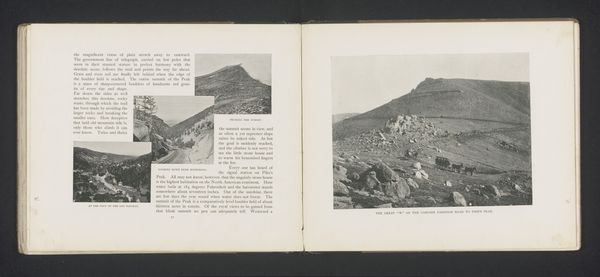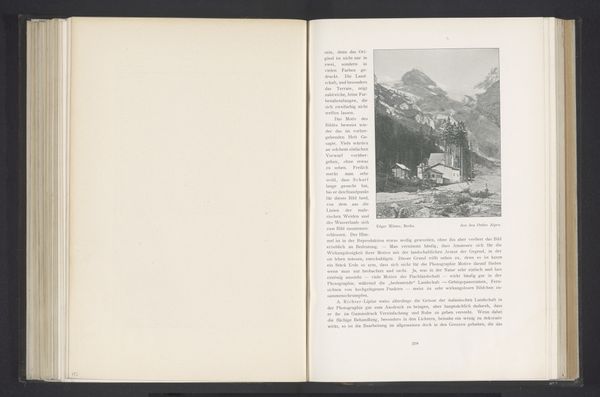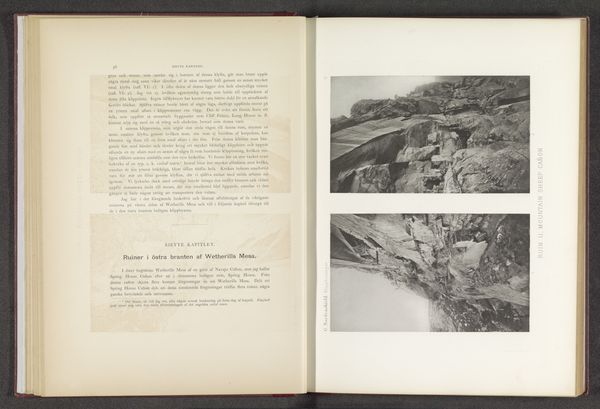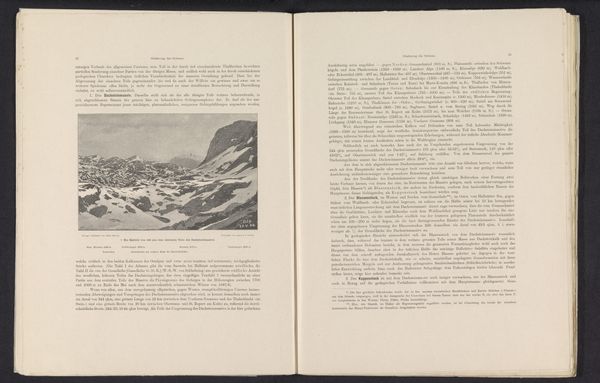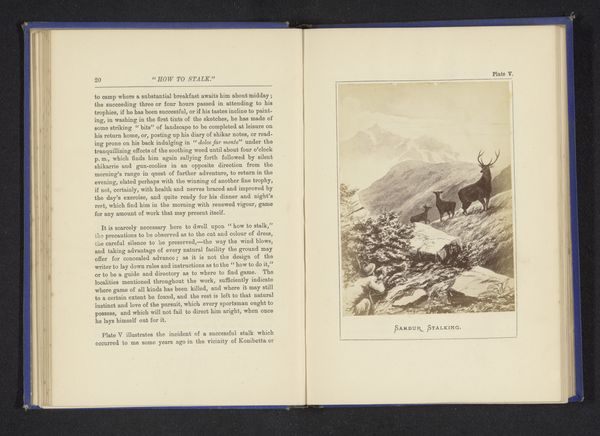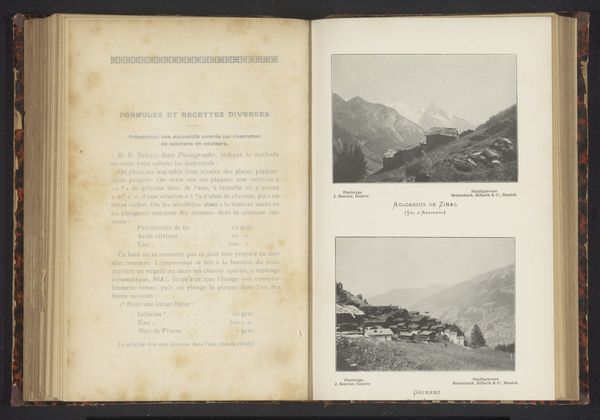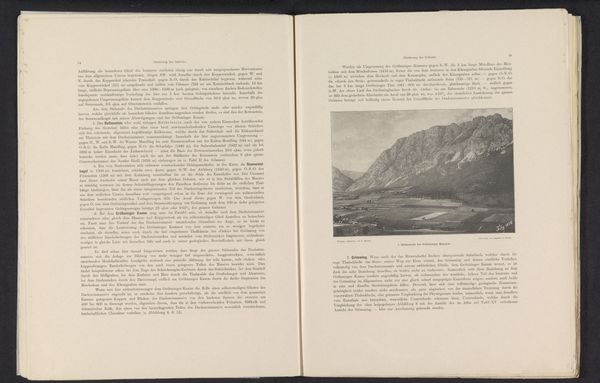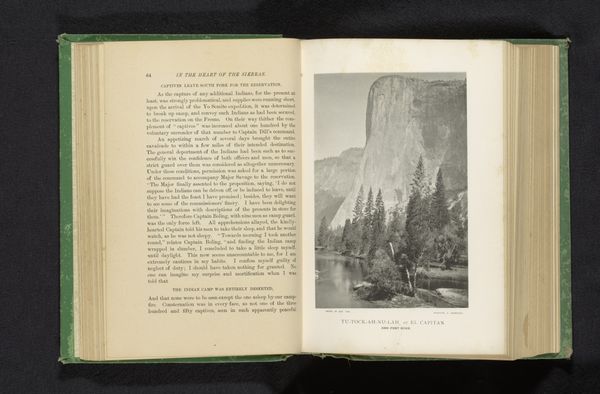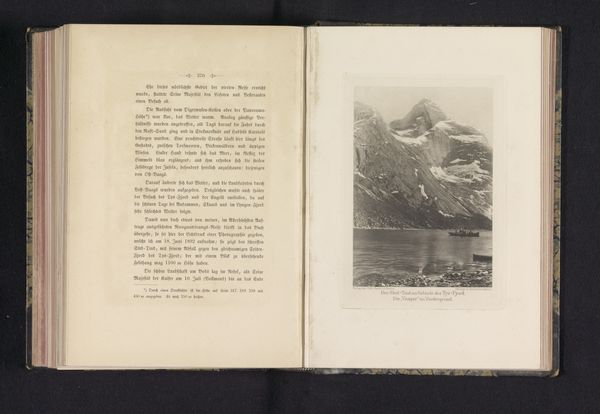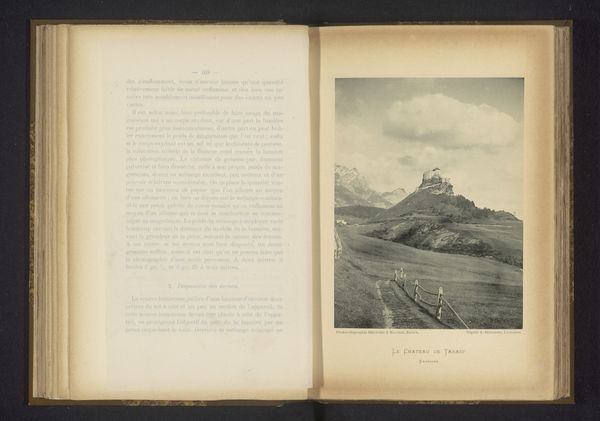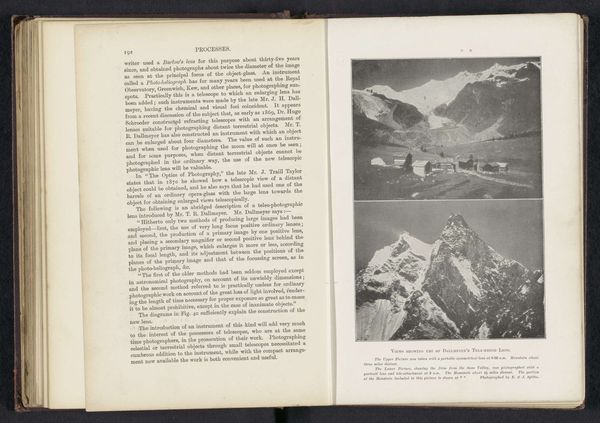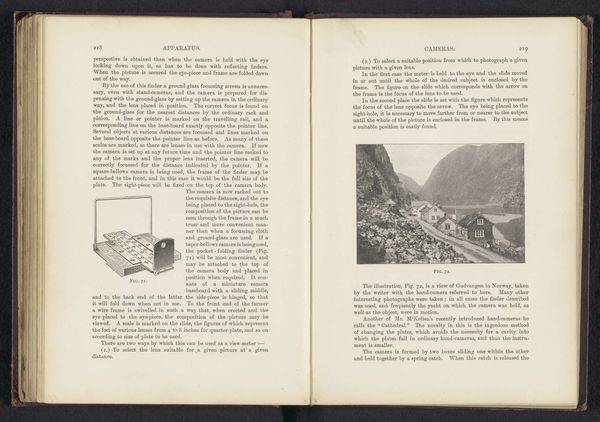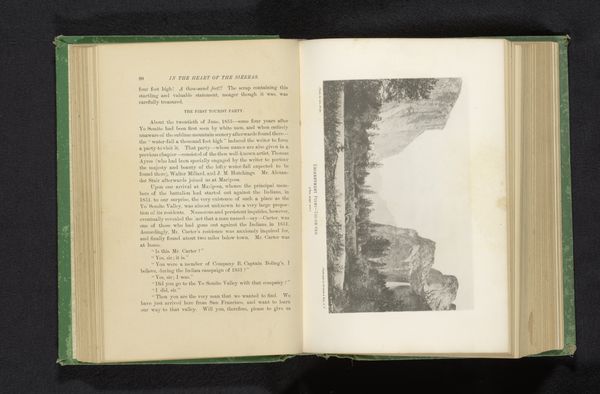
print, photography, engraving
# print
#
landscape
#
waterfall
#
photography
#
engraving
Dimensions: height 155 mm, width 108 mm
Copyright: Rijks Museum: Open Domain
Curator: Check out this arresting image titled "Gezicht op Liberty Cap en Nevada Fall in Yosemite Valley, Californië" created sometime before 1886 by George Fiske. It seems to be a photograph reproduced as a print or engraving, maybe for a publication? Editor: Striking! The contrast is intense, almost stark. It gives the scene a feeling of both grandeur and remoteness. It's all angles and textures, yet somehow calming. The high viewpoint invites the eye to take its time traveling downward, lingering along the way. Curator: Fiske really captures that early American spirit of exploration, doesn't he? His work comes at a time of rapid westward expansion and increased interest in natural landscapes, but it's difficult to fully imagine or understand his position or what access he had. Editor: Absolutely. And within that context, the focus on capturing Yosemite shifts too. We see this iconic view, but also, knowing the period, a vision inevitably shaped by notions of Manifest Destiny. Was he simply documenting the land or unconsciously advocating for settlement? Did it acknowledge existing ancestral relations of native Americans, for example? It invites us to question not just what we see, but what remains unseen. Curator: I agree. Looking closer, I am curious about the perspective. The detail is superb, especially in Liberty Cap’s face. And the smallness of the Nevada Fall makes the Valley seem infinitely bigger. It is easy to appreciate the meticulous details Fiske captured in the shadows. Editor: The high contrast adds a symbolic weight, perhaps even suggesting the environmental tensions that later surfaced when preservation became a key theme in American political discourse. So, it's about what's present and also, quite potently, about absences and possible displacements. It's visually and historically packed! Curator: Seeing these contrasts helps me realize how Fiske’s landscapes served not just as beautiful views but as powerful arguments for conservation, even before the idea was fully developed. Editor: Right, and looking at this image challenges us to really investigate our perspectives and positionality regarding natural resources and preservation efforts across time and how that differs from or remains true. What stories do these images hide? What do they amplify? That’s where the real adventure of engagement starts, I believe.
Comments
No comments
Be the first to comment and join the conversation on the ultimate creative platform.
